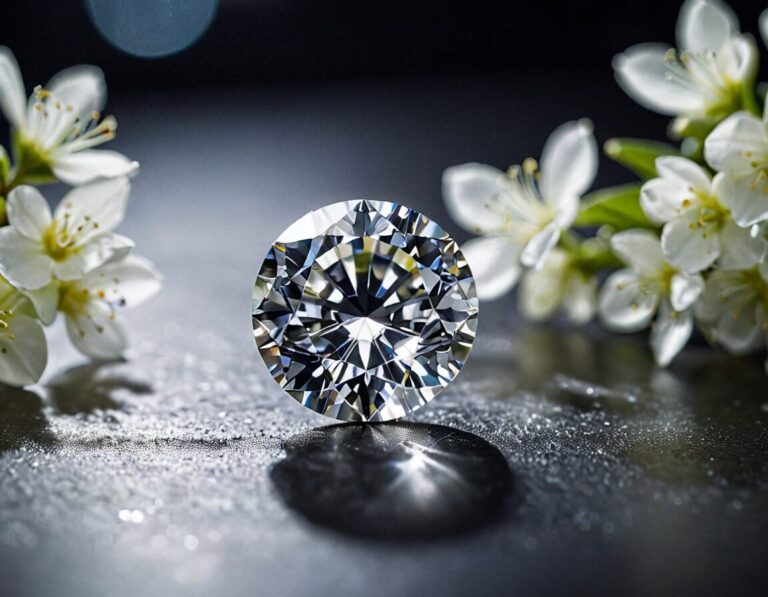Diamonds are often seen as symbols of luxury and elegance. One of the key factors that determine a diamond’s value and beauty is its color. Understanding diamond color grading can help you make informed decisions when purchasing a diamond. This guide will break down the essentials of diamond color grading, how it impacts value and appearance, and provide helpful tips for buyers.
Table of Contents
- What is Diamond Color?
- The Diamond Color Grading Scale
- How Diamond Color Affects Value
- Impact of Diamond Color on Appearance
- Tips for Choosing the Right Diamond Color
- Conclusion
1. What is Diamond Color?
Diamond color refers to the presence of any color within a diamond. The less color a diamond has, the higher its value. Diamonds with less color allow more light to pass through them, resulting in a sparkle that is highly sought after.
2. The Diamond Color Grading Scale
The Gemological Institute of America (GIA) developed a color grading scale to assess the color of diamonds. The scale ranges from D (colorless) to Z (light yellow or brown).
| Grade | Description | Explanation |
|---|---|---|
| D | Colorless | The highest color grade. No color is visible even under magnification. |
| E-F | Colorless | Minute traces of color detectable only by an expert gemologist. |
| G-H | Near Colorless | Slight traces of color. Still appears colorless to the untrained eye. |
| I-J | Near Colorless | Slightly detectable color. Excellent value for a budget. |
| K-M | Faint Color | Noticeable color. Generally, more affordable. |
| N-R | Very Light Color | Obvious color. Not often used in fine jewelry. |
| S-Z | Light Color | Highly noticeable color. Rarely used in fine jewelry. |
Color Grading Chart
3. How Diamond Color Affects Value
The value of a diamond can significantly change based on its color grade. Generally, diamonds that are closer to colorless (D-F) are more valuable. Here’s a simplified chart showing how diamond color impacts price:
| Color Grade | Price Impact |
|---|---|
| D | Highest price |
| E | Slightly lower |
| F | Slightly lower |
| G-H | Noticeably lower |
| I-J | Budget-friendly |
| K-M | Affordable |
| N-Z | Least expensive |
Price Comparison Table
| Carat Weight | D Color | F Color | H Color | J Color | M Color |
|---|---|---|---|---|---|
| 0.50 | $2,500 | $2,200 | $1,800 | $1,500 | $1,200 |
| 1.00 | $8,000 | $7,000 | $6,000 | $4,500 | $3,500 |
| 1.50 | $14,000 | $12,000 | $10,000 | $8,000 | $6,000 |
| 2.00 | $20,000 | $18,000 | $15,000 | $12,000 | $9,000 |
4. Impact of Diamond Color on Appearance
The color of a diamond affects its appearance in various ways. Here are some key points to consider:
- Sparkle and Brilliance: Colorless diamonds (D-F) allow more light to pass through, resulting in greater brilliance and sparkle.
- Setting Impact: The color of the diamond can be influenced by its setting. For example, a yellow gold setting can make near-colorless diamonds appear more colorless.
- Size Perception: In larger diamonds, color is more noticeable. Therefore, higher color grades are often preferred for larger stones.
Visual Examples
| Color Grade | Appearance |
|---|---|
| D | Completely clear and bright |
| F | Nearly indistinguishable from D to the naked eye |
| H | Slight tint visible to experts |
| J | Faint tint visible to most |
| M | Noticeable color |
5. Tips for Choosing the Right Diamond Color
Selecting the right diamond color depends on personal preferences and budget. Here are some tips to help you make the best choice:
- Consider the Setting: If you prefer a yellow gold setting, you can opt for a lower color grade without compromising on appearance.
- Balance with Cut and Clarity: Sometimes, a slightly lower color grade can be balanced with an excellent cut and clarity.
- Personal Preference: Some people prefer the warmth of diamonds in the I-J range.
- Budget: Determine your budget first and see which color grade fits within it while maintaining a balance with other factors like cut and clarity.
- Try Before You Buy: If possible, view diamonds in different lighting conditions to see the true color.
Practical Buying Guide
| Budget | Recommended Color Grade | Best For |
|---|---|---|
| High | D-F | Maximum brilliance and investment |
| Medium | G-H | Excellent balance of quality and price |
| Low | I-J | Good value without noticeable compromise |
6. Conclusion
Understanding diamond color grading is crucial when choosing a diamond. The color not only affects the diamond’s value but also its appearance. By considering factors such as personal preference, budget, and the setting, you can find the perfect diamond that balances beauty and affordability.
By understanding the fundamentals of diamond color grading, you can make informed decisions that suit your style and budget. Remember, the best diamond is one that meets your personal criteria and brings you joy for years to come.
